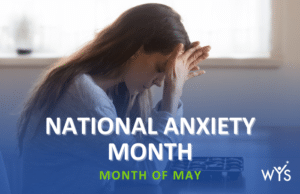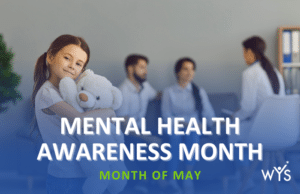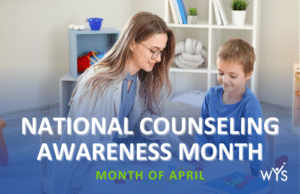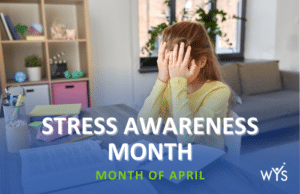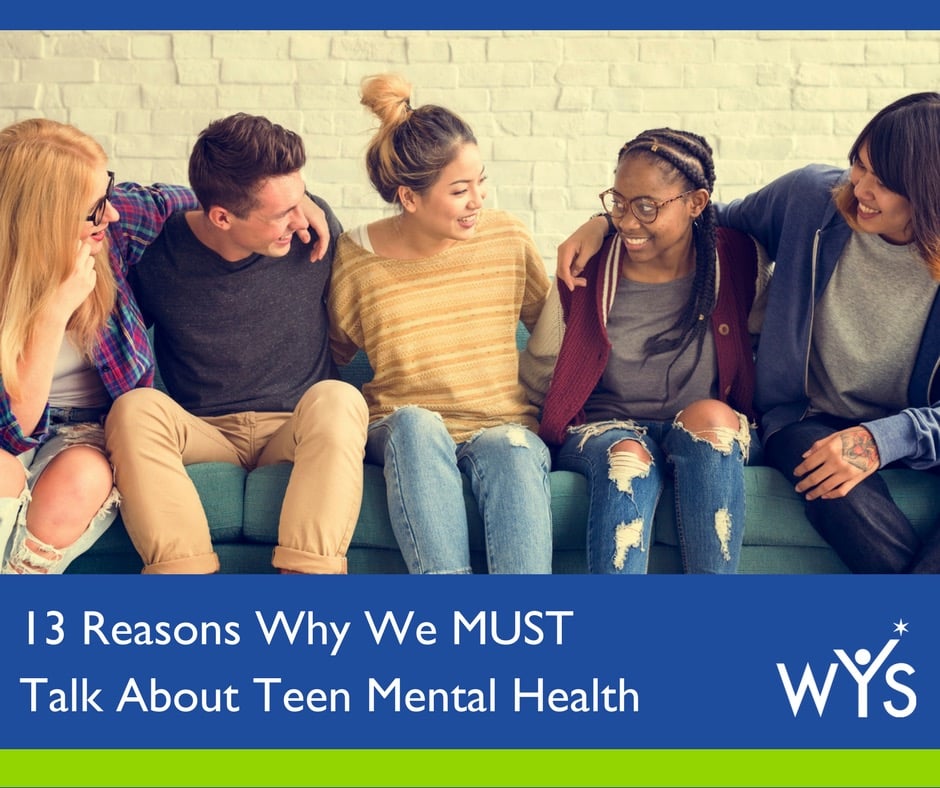
13 Reasons Why We MUST Talk About Teen Mental Health
Last year, the New York Times reported that the suicide rate in the United States had hit a 30 year high, particularly affecting adolescent girls. Suicide is the third leading cause of death for young adults ages 15-24, and reports state that most teens who completed suicide have some type of coexisting mental health condition, such as depression, anxiety or drug and alcohol abuse.
The time to talk about teen mental health issues is now, and the place to start is with open conversation.
Perhaps it makes sense why 13 Reasons Why is one of the most popular shows on Netflix this year. It tells the story of a high school student named Hannah Baker, who through a series of tapes, offers a rationale for why she decided to take her own life. There is an ongoing debate on whether or not such graphic details were constructive or destructive to reveal, but what we know is that regardless, being able to identify and address warning signs and symptoms of mental health issues is very important. Having this knowledge may very well save lives.
Toxic Stress Affects Teen Mental Health
There is a common denominator that we see in our work, toxic stress that occurs in childhood. The 1998 landmark Adverse Childhood Experiences (ACEs) Study by the Centers for Disease Control and Prevention and Kaiser Permanente provides insight on types of toxic stress that results from childhood trauma (e.g. abuse, neglect, family dysfunction) that are predictive of mental health outcomes, such as depression and anxiety, suicide attempts and drug abuse. Our focus is on how we can help minimize the impact of adversity, bolster strengths to build resiliency, and in many cases change the trajectory of young lives.
In 2016, we conducted a review of the impact of ACEs and their relationship with collaborative youth mental health services. We sought to determine the relationship between our integrated and collaborative mental health services and mental health outcomes, specifically with children who were exposed to multiple adverse childhood experiences. The goal was to further our development of evidence-based practices and present a case for support for widespread understanding of ACEs as part of mental health treatment and prevention strategies.
The content of our report shows:
- ACEs pose a threat to proper brain development.
- More than half of the adults in California have at least one ACE.
- Individuals with four or more ACEs are seven times more likely to have mental health problems and 11 times more likely to attempt suicide than individuals with zero ACEs.
- Without intervention, the estimated weighted annual community cost per child is $18,856 in one community.
- Western Youth Services is addressing ACEs with nearly every research-recommended strategy.
 Our Version of 13 Reasons Why
Our Version of 13 Reasons Why
Over the course of the next few months, we will be publishing a series of articles addressing the most prevalent 13 adversities and/or teen mental health conditions that our clients experience. It is our hope that the overview below and the accompanying articles in the series will serve as an informative resource to increase awareness, reduce stigma, cultivate healing, strengthen communities, and most importantly to change lives.
1. Abandonment
Whether through divorce, death, distant parents or caregivers, or a falling out among friends, abandonment issues create emotional conditions that are not conducive for healthy development. Young adults who have been the victims of abandonment may struggle to trust others, inadequately express their needs, and experience disproportionate feelings of shame, low self-esteem and the like.
2. Abuse
Abuse is an umbrella term for any act that aims to “diminish one’s sense of identity, dignity, or self-worth.” Abuse can be verbal, physical, sexual, or emotional, and can occur whether or not the abuser is aware that they are negatively harming someone. Abuse can be inflicted by parents, friends, neighbors, acquaintances or strangers. Teen dating abuse and violence is a particularly big issue for adolescents and young adults today.
3. Anxiety and Depression
Although anxiety and depression are not mutually exclusive, they can both be characterized by the persistent and excessive presence of worry, sadness, irritability or unwanted/intruding thoughts. The conditions, which can often occur in tandem, may present as irrational worry, withdrawal, isolation, disinterest in activities and family/friends, changes in appearance, irritability or moodiness. Anxiety and depression are the leading causes of suicidal ideation. Over 90% of young adults who report experiencing suicidal thoughts are also being diagnosed with one or both.
4. Bullying and Cyberbullying
Bullying is unwanted or aggressive behavior that creates a real or perceived power imbalance. Bullying can include, but is not limited to: teasing, name-calling, threatening to cause harm, leaving someone out on purpose, spreading rumors, publicly embarrassing, hitting, kicking, tripping, stealing, or insulting someone. Cyberbullying is bullying that occurs using electronic technology, and can include, but is not limited to: mean texts or emails, rumors posted publicly, embarrassing photos or videos, and the creation of fake profiles used to mock or steal the identity of an individual.
5. Drug and Alcohol Abuse
Drug and alcohol abuse is the usage or over-usage of illegal or prescription drugs or excessive alcohol intake. Studies show that there is a link between drug and alcohol abuse and suicide in teens, and some of the warning signs include having a sudden change in friends, being secretive or withdrawn from family, dropping grades, paying less attention to hygiene and new or odd behavior.
6. Eating Disorders
Eating disorders are the use of restriction, binging or purging in association with negative body image and self-esteem, or the desire to change one’s body. Behaviors may include restricting meals, not eating for long periods of time (anorexia), binging and then purging (bulimia), exercise addiction (orthorexia), overeating to the point of feeling sick (binge eating), or a combination of these. Some causes may be related to genetics, traumatic experiences, peer pressure, bullying, or having a friend or family member with an eating disorder.
7. Embarrassment and Shame
Shame is the emotion of feeling “lesser than,” bad, wrong, or unworthy. Embarrassment is the feeling that accompanies having your individuality or inadequacy (whether real or perceived) made a point of public attention. These emotions occur often in young adulthood, as teens are developing their sense of self and finding their confidence. Research notes that it is during this time of life that our propensity to compare ourselves to others, self-reflect and feel sensitivity toward other people’s opinions is at a high. Feeling embarrassed or ashamed of oneself is one of the most overlooked connections to suicide or suicidal ideation.
8. Family Dysfunction
There are a wide range of issues that are considered familial dysfunction. Most people associate it only with big events such as witnessing violence at home, living through a parental divorce, separation, or death, drug or alcohol abuse, physical abuse, and family members with mental, physical, or emotional illness. There are also adversities that may seem small or even go unnoticed, yet they cause traumatic stress that can lead to depression or anxiety that negatively impacts a person for life.

9. Social Isolation and Withdrawal
Social isolation and withdrawal are classic signs of depression and possibly suicidal ideation. It occurs when the discomfort and stress of being around other people becomes so unbearable that one prefers to be by themselves more often than not. Children and young adults who struggle to fit in and feel accepted are more prone to experiencing bouts of withdrawal than adults.
10. Learning Disabilities
Young individuals with learning disabilities reportedly experience more abuse, neglect, challenging family dynamics, peer bullying, and exclusion than anyone else. Studies state that persons with learning disabilities “are likely to be at increased risk for undetected suicidal thoughts and behaviors.” This can be due, in part, to feeling misunderstood and isolated, different thought and conversation patterns, and struggling with tasks and responsibilities that seem to come more easily for others.
11. Neglect
Though neglect falls under the umbrella of abuse, it is different from it in that it is the failure of a parent, caregiver or other guardian to care for a child under 18. Neglect can be physical or emotional, and it also includes failure to protect against sexual abuse, as it relates to the disregard for a child or young adult’s well-being. Studies show that over half of individuals who are admitted for care due to neglect show suicidal behavior.
12. Peer Pressure
Peer pressure is the influence that individuals within the same age group or social circle project onto one another. Often, it is actually the pressure to feel perfect or to perform in a way that is out of alignment with one’s true wants, desires or values that pushes the correlation between peer pressure and suicidal thoughts or behavior.
13. Self-harm and Suicide
Self-harm, suicide, and other forms of intentional self-mutilation affect 15% of adolescents in the US, and 17%-35% of college-aged students, according to The Journal of the American Board of Family Medicine. Self-harm is the umbrella term for any behavior that involves intentionally harming one’s body, such as cutting or burning. It is typically a sign that a young adult does not have the coping mechanisms to deal with such intense feelings of pain or dread, which is also what drives some to feel that there is no other way to “escape” than to end their own life.
Suicide is never a solution. It is an irreversible choice regarding a temporary problem. There is help. If you are struggling with thoughts of suicide or know someone who is, talk to a trusted adult, call 1-800-273 TALK (8255), or text “START” to 741741.
Since 1972, we have aimed to advance awareness and redefine mental health to include mental health and wellness services for children, teens, and families. We are acutely aware of the signs and symptoms of intensive mental health needs. Through our decades of work, we are knowledgeable of the common precursors to crises and the risk factors associated with mental health conditions. We are also experts in mitigating the ravaging effects of childhood trauma through our evidence-based and evidence-informed practices and treatment. Our 3-tiered approach provides a wide range of prevention strategies, targeted intervention and clinical treatment for those with intensive mental health needs.
We have countless stories of healing and recovery to share, in which our clients have minimized the impact of adversity, developed their resiliency muscles, and gone on to lead happy, fulfilling lives. We recognize that each story began with a conversation, and we hope that the following series provides a starting point for more families, schools, and communities to have the knowledge and resources to start talking to the young people in their lives about what’s really going on in their hearts and in their minds.
The time to talk about teen mental illness is NOW.

Lorry Leigh Belhumeur, Ph.D.
Chief Executive Officer
Western Youth Services



